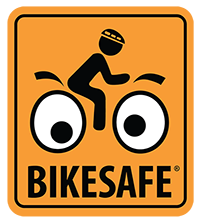A necessity for all-ages mobility
Whether we want to ride to school, to work, or choose the bicycle simply for financial reasons, the safety of our surrounding streets influences whether this is possible. Kids deserve the right to explore their neighborhoods and the physical activity that comes with it.
Unfortunately, US street design of the 20th century - ever since the invention of the automobile - has heavily prioritized speed over safety. Places to walk or ride (and the reduction of transit, such as streetcars) were severely reduced or eliminated.
Fortunately, engineers, planners, public health professionals, and advocates are beginning to realize these errors and road engineering standards at the federal and state level are slowly adjusting to better accommodate people of all ages. These are some of the ways streets can be safer and how you can help make them happen in your community:
Safe solutions:
Despite many claims that our roads are inflexible to change, this isn't true. While it is very difficult to get changes built, there are many opportunities which you can help support and advocate for.
Protected bike lane networks, for instance, can make riding safe and accessible for riders of all ages.
They're so important that we have a dedicated page about them. Traffic calming also helps towards holistic safety that benefits bicycle riding, walkability, and youth mobility alike.
These are some examples of what your city can do to make your streets safer for everyone:
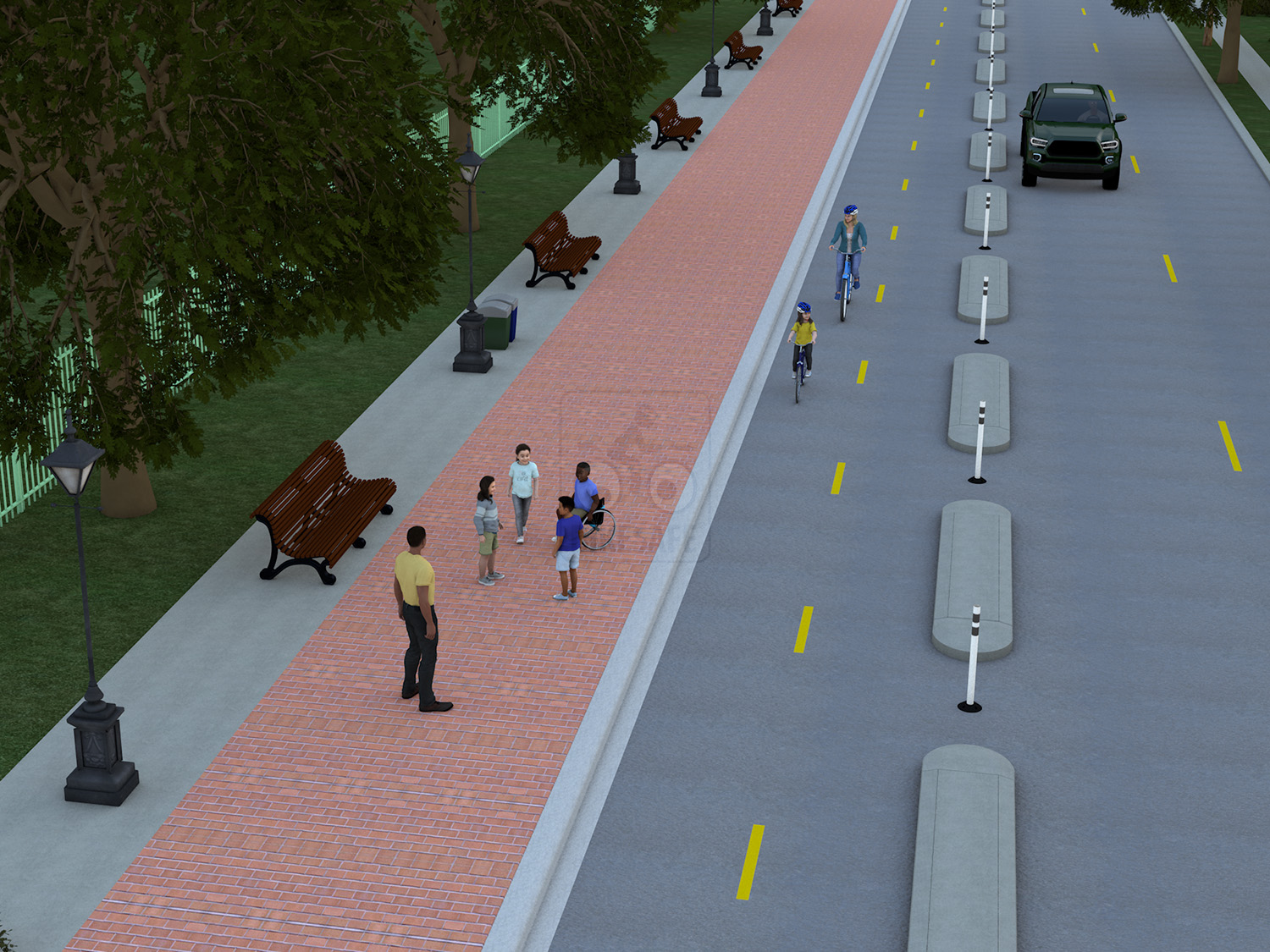
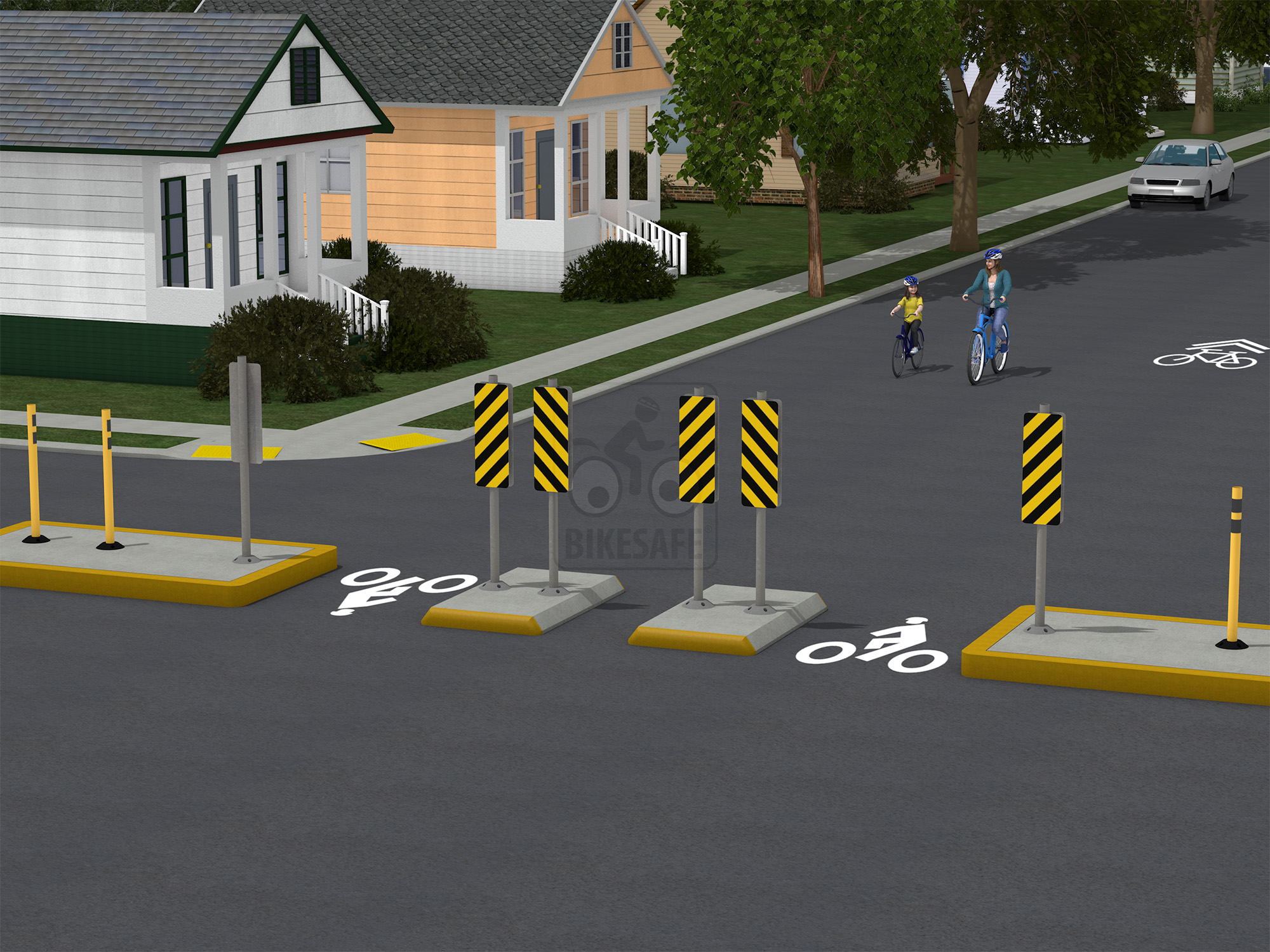
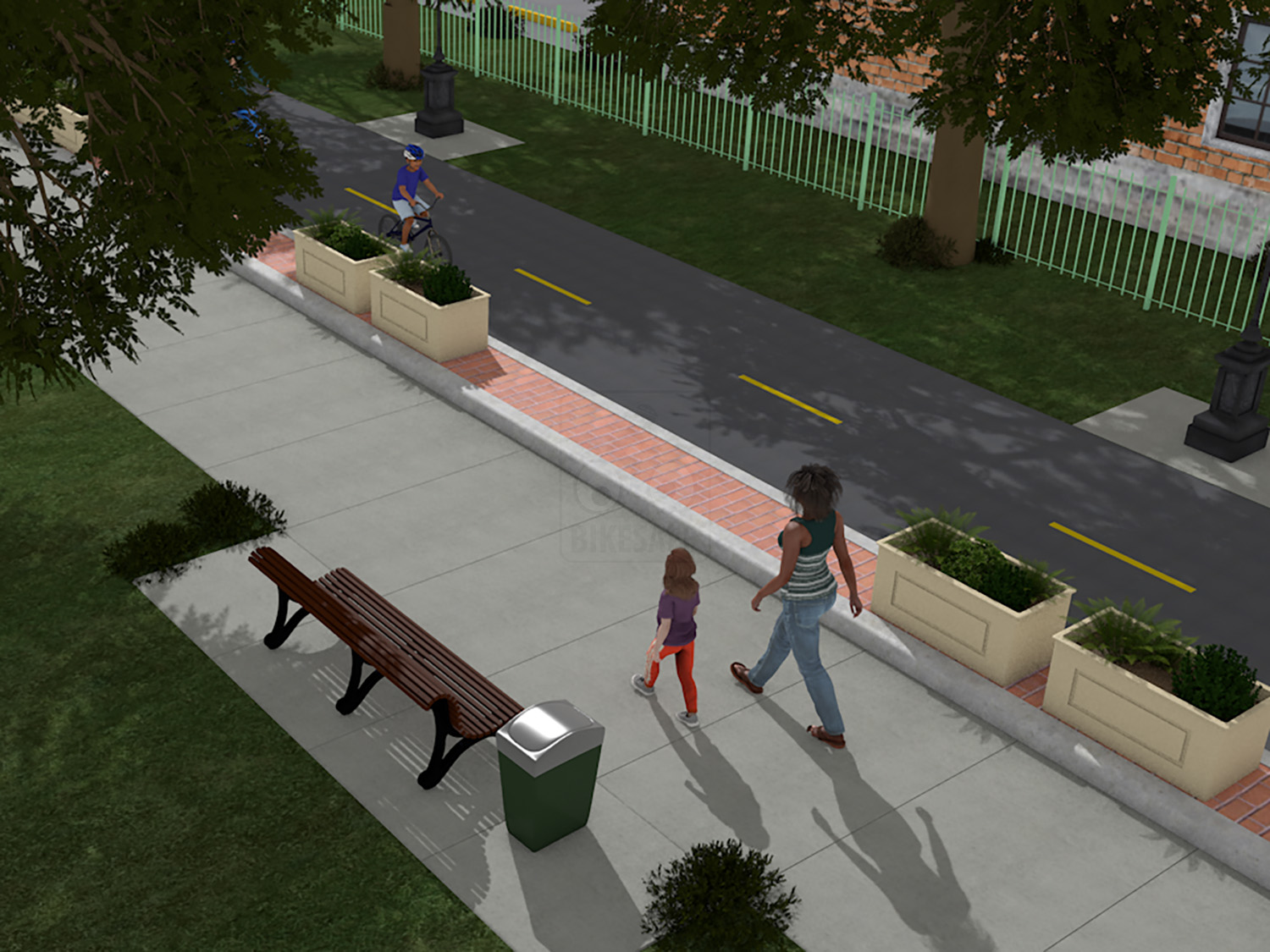
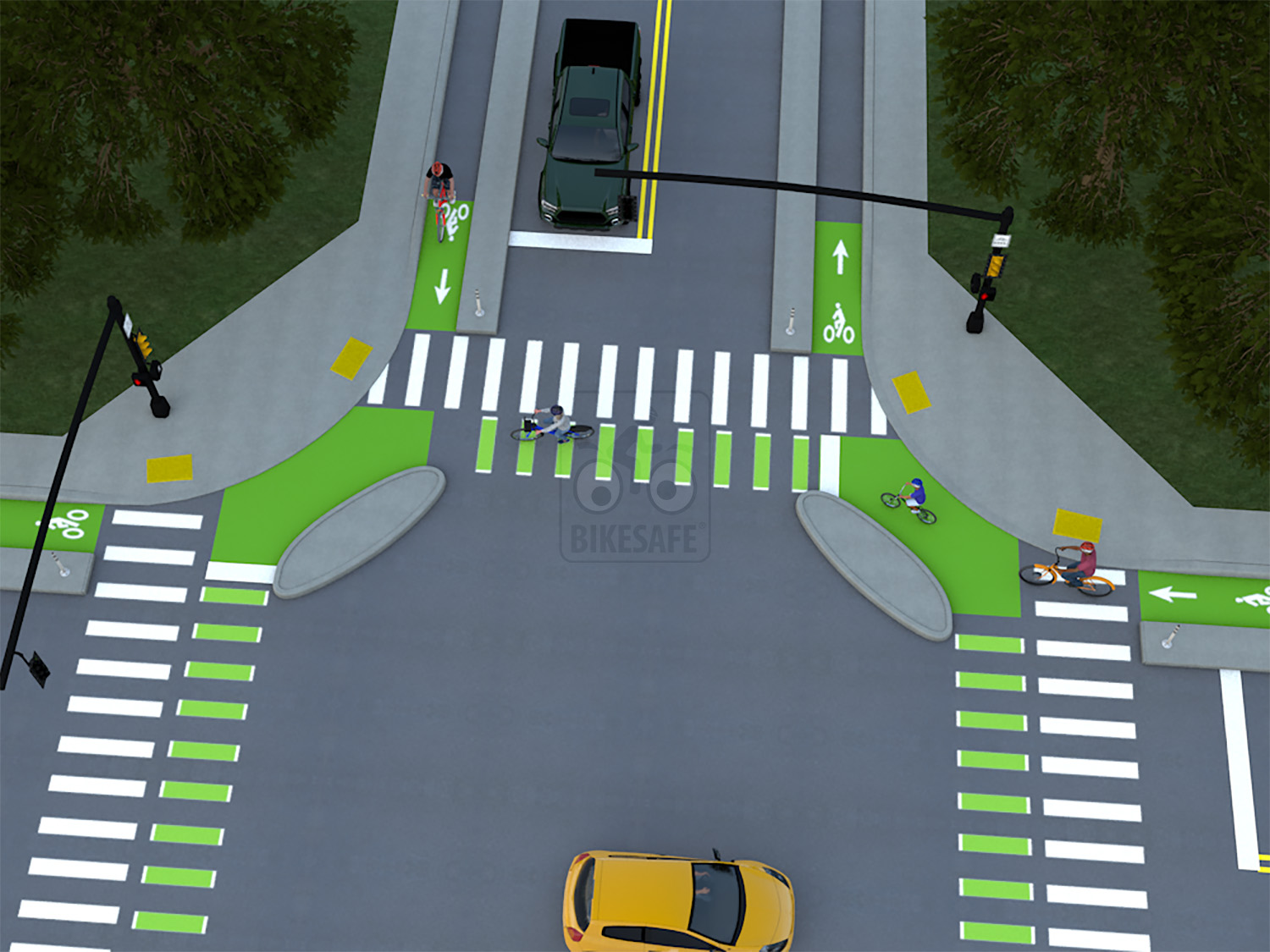
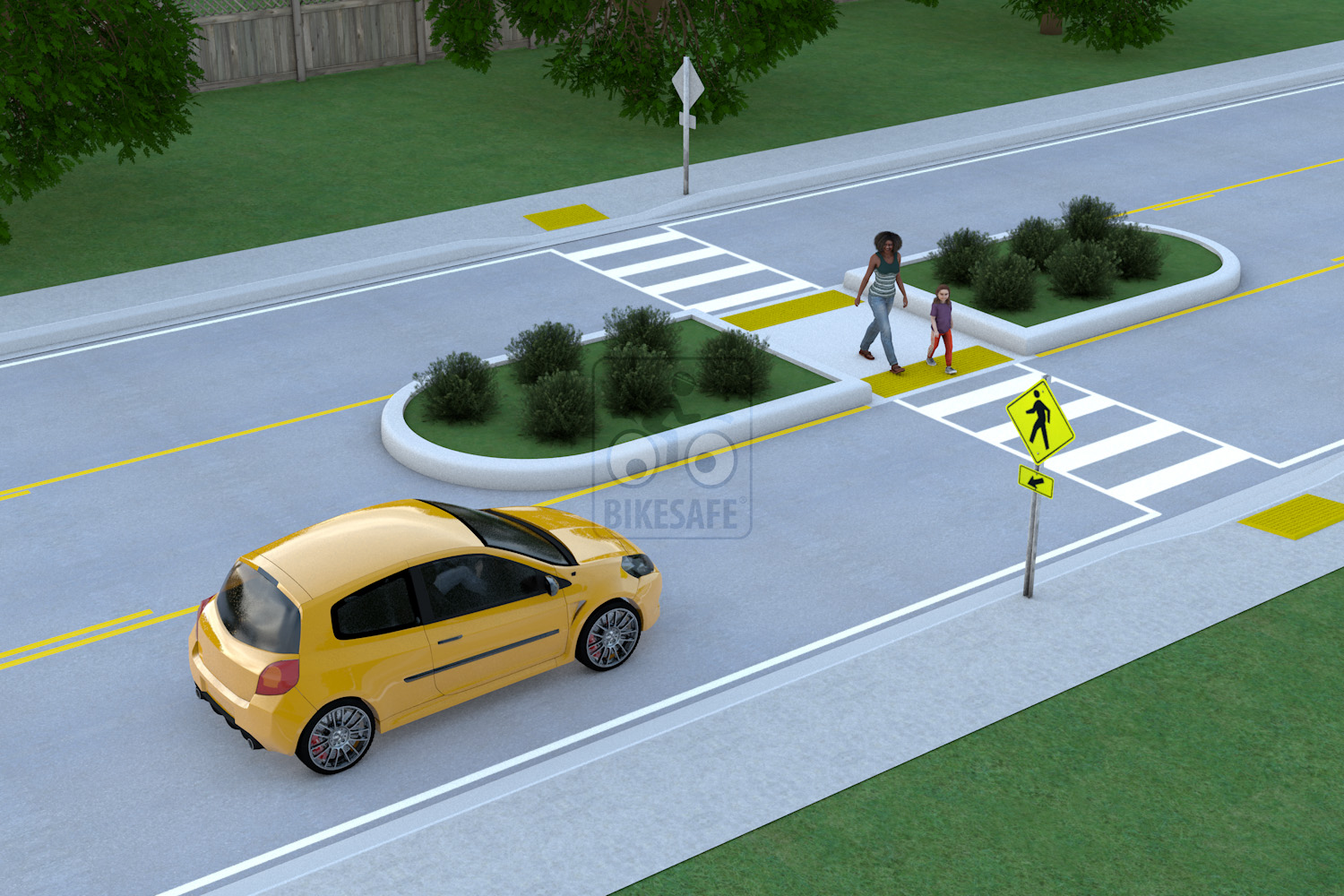

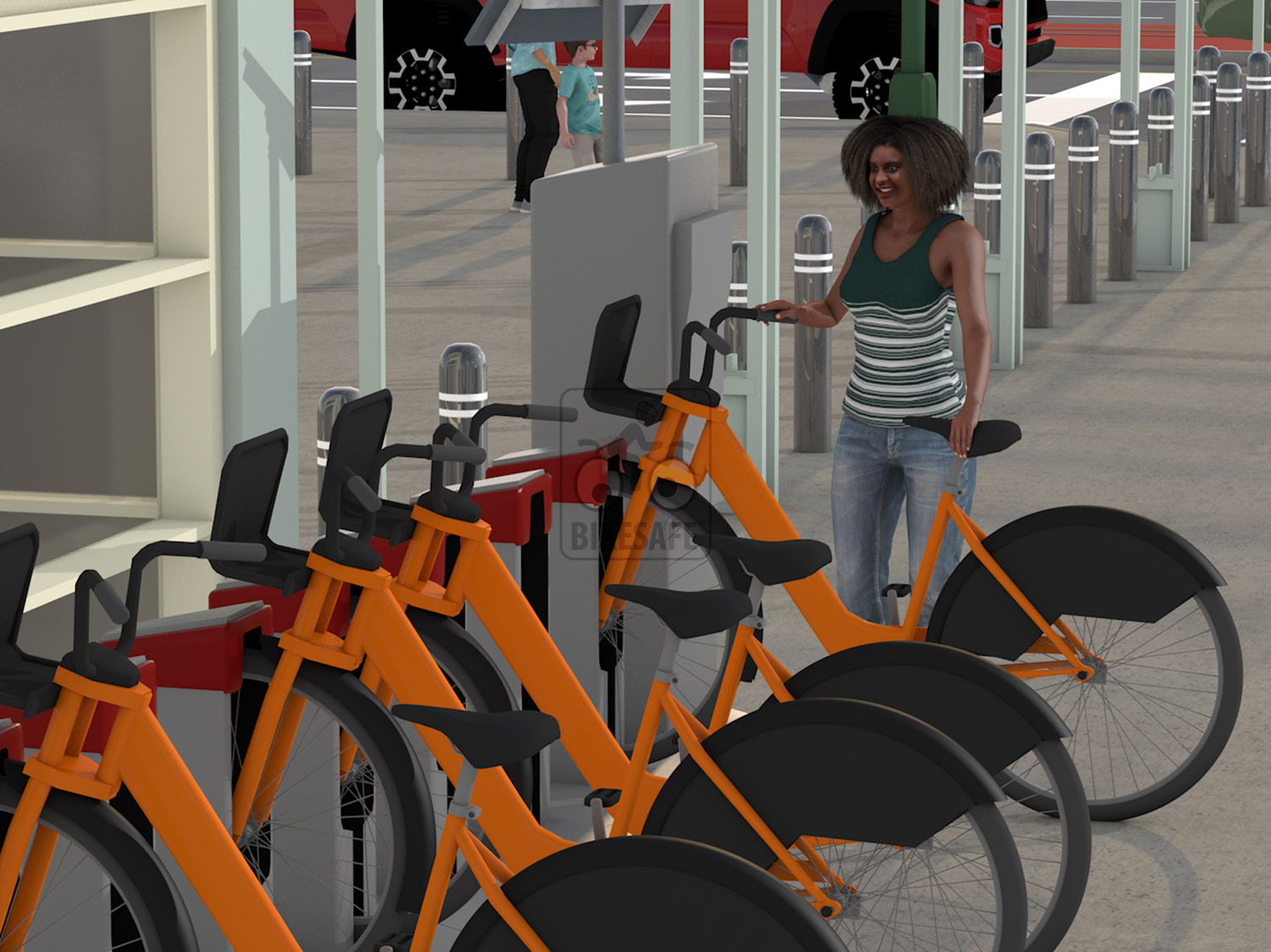
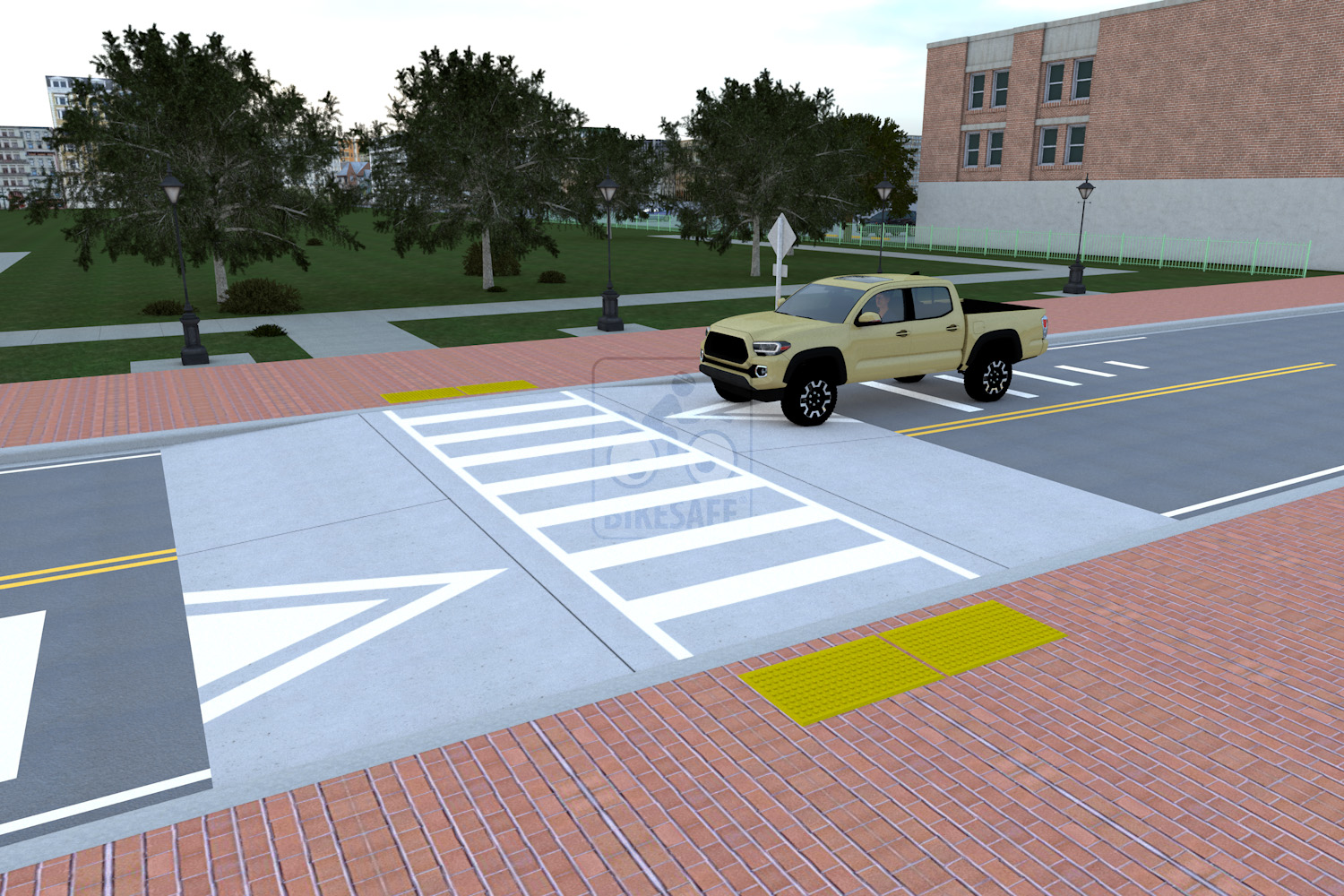
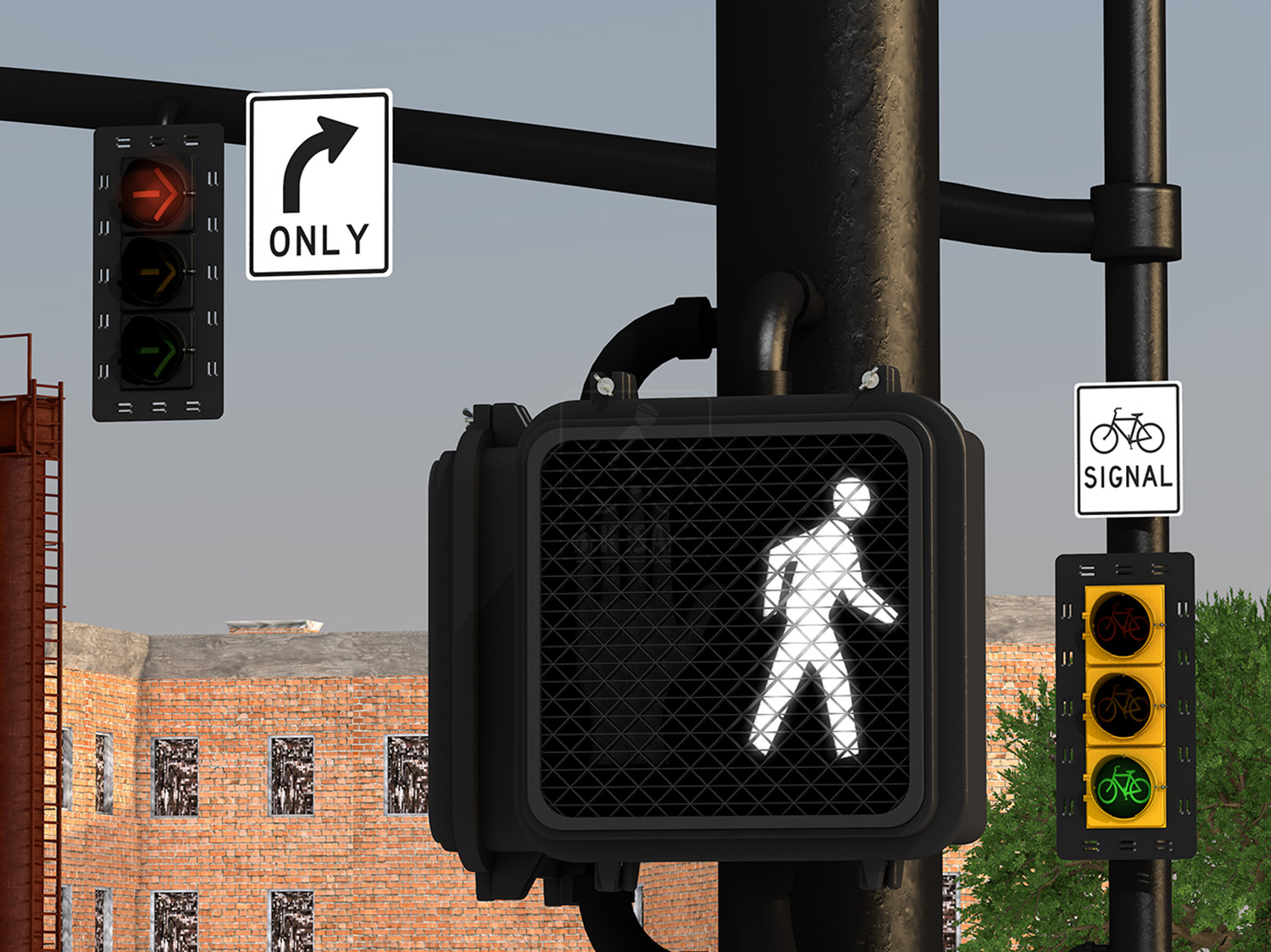
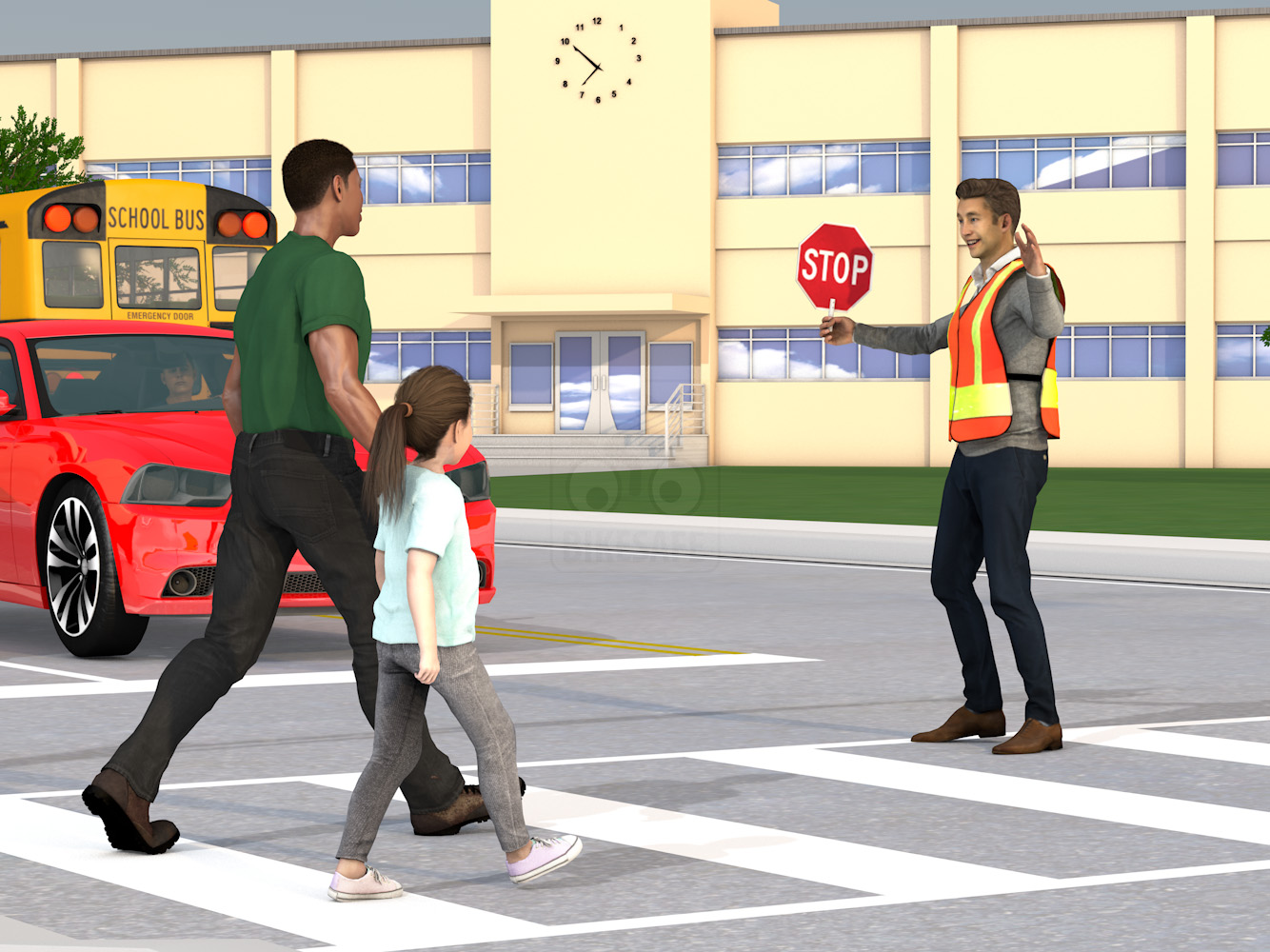
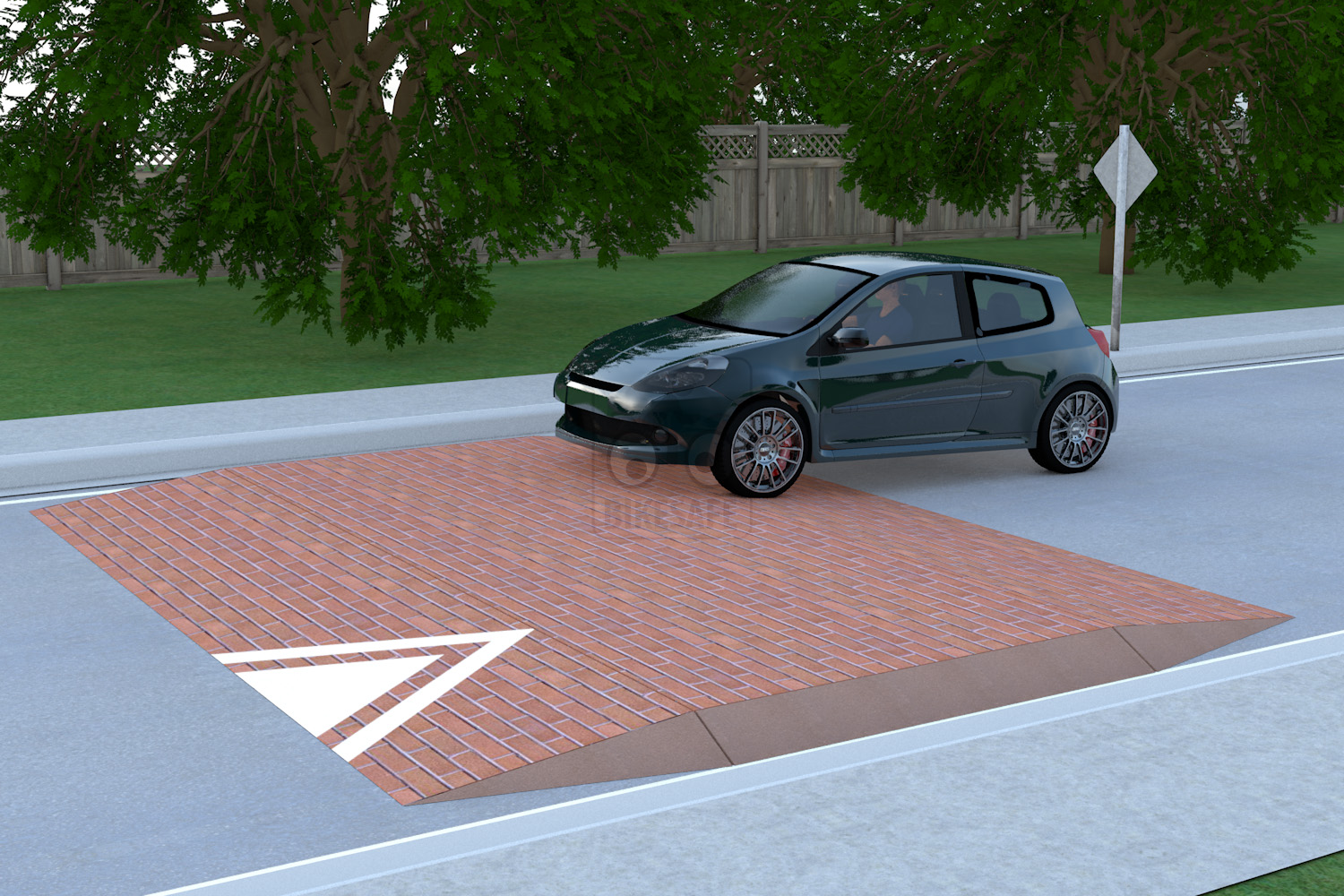
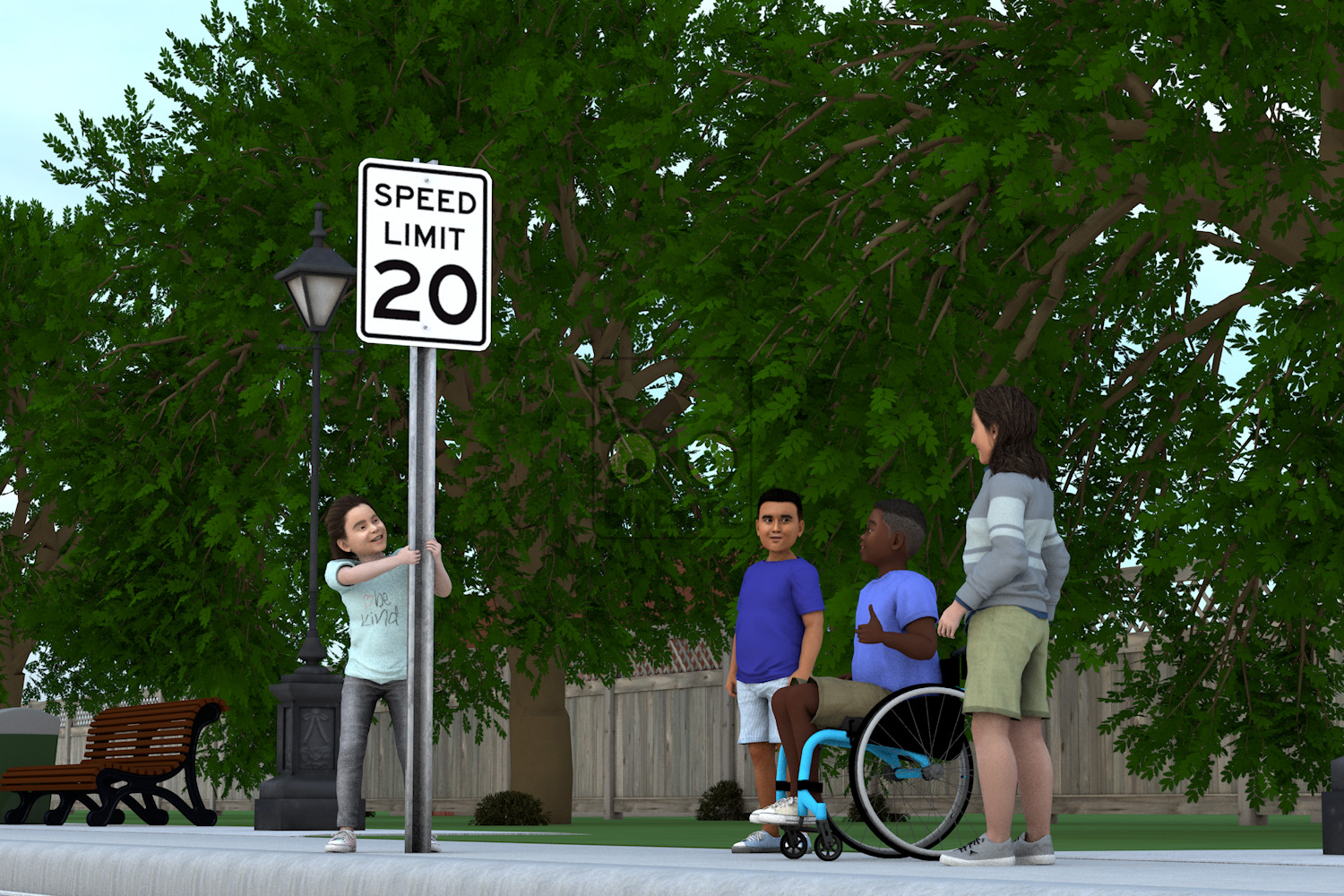
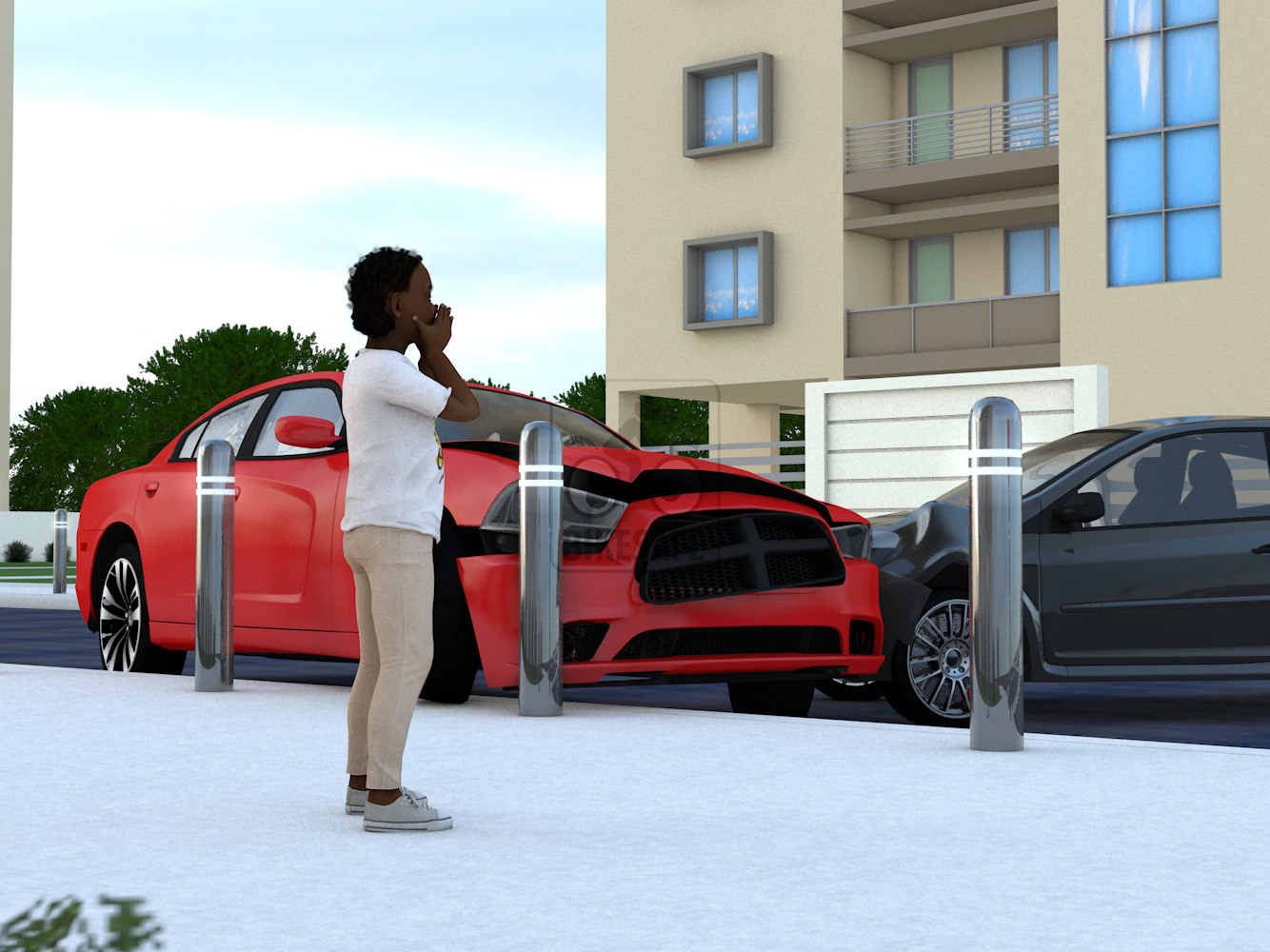
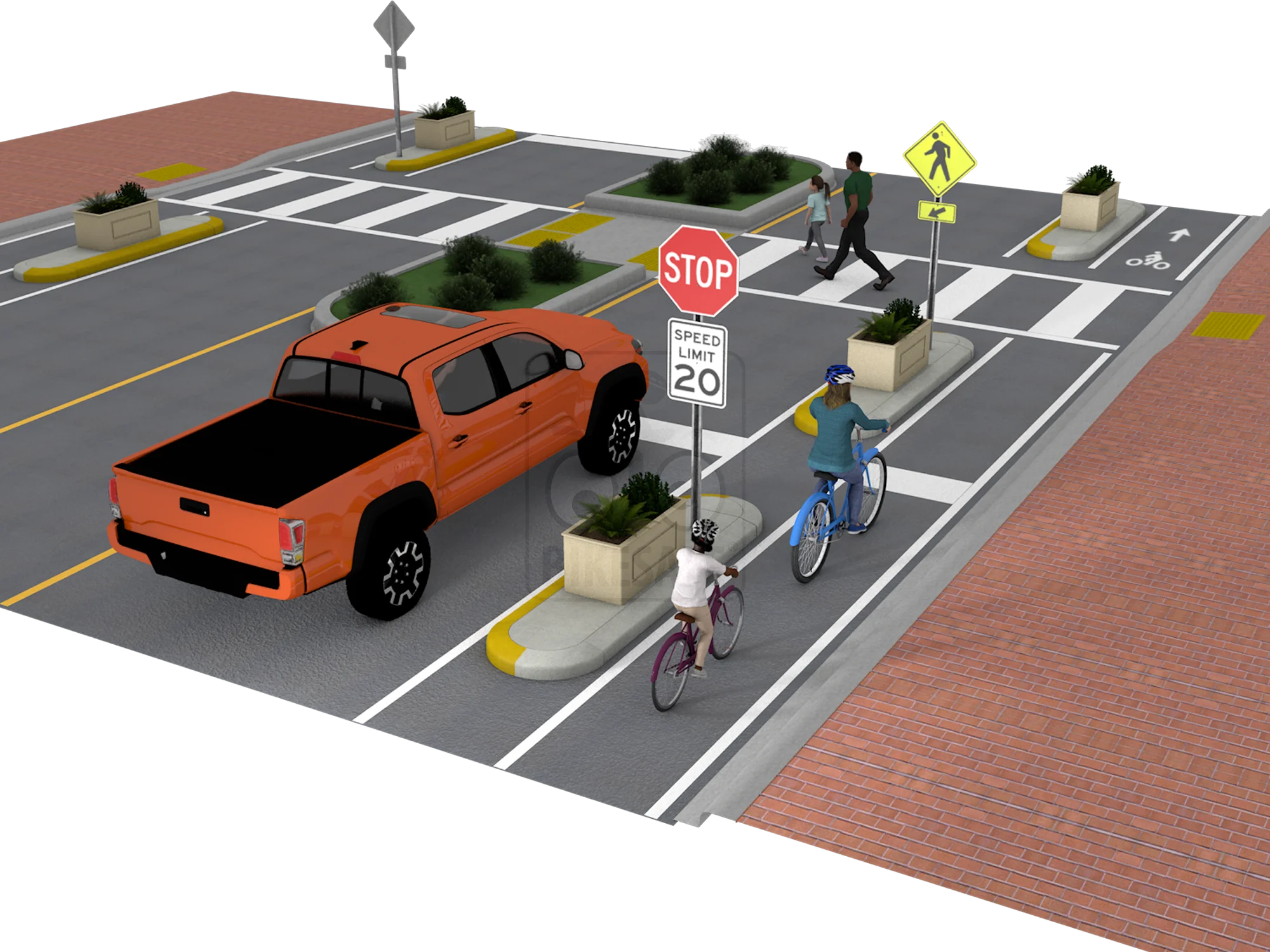
Protected bike lanes keep kids (and adults) safe
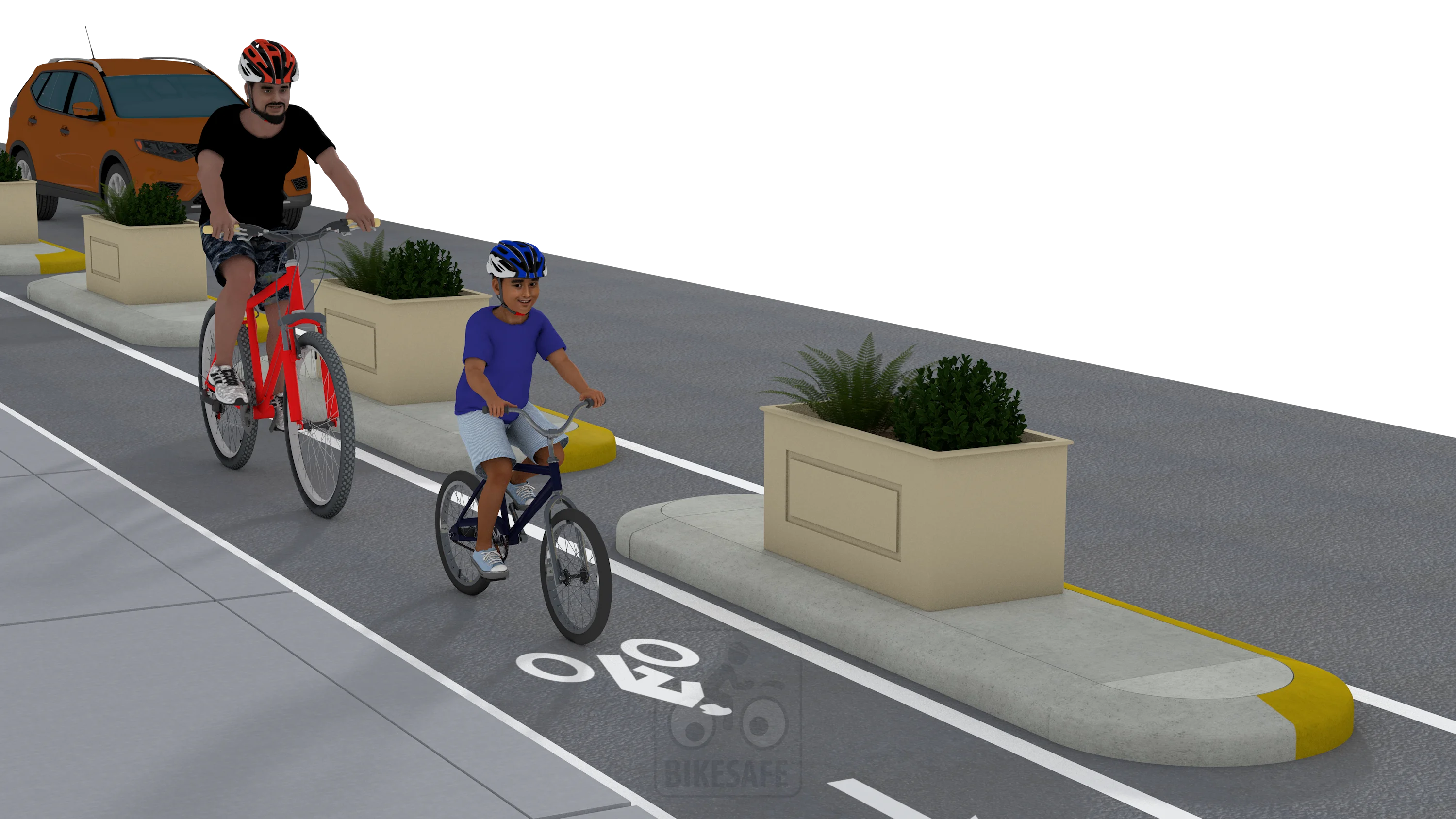
"Paint is not protection" is the latest phrase to describe bike lanes that are separated from traffic by nothing other than a white stripe. These do very little to make riding a safe activity for families and those simply looking for an alternative to a car trip.
Instead, safe, barrier-separated protected bike lanes, like the example above, are now becoming part of roadway design standards along with protected intersections. These separated designs are associated with a 50% reduction in crashes, make riding more attractive for risk-averse riders, and are covered here on our site.
The importance of neighborhood streets:
Older neighborhood streets from the 1930's and 1940's - like the one below - were designed much narrower than today. They functioned both as a neighborhood footpath and a street for the limited car traffic at the time.
These were the streets that allowed parents to say "go outside and play" and not worry about their child's safety.
By virtue of their narrow lanes and tight turns, these streets still encourage more respectful, slower driving today, and are a key player in the safe streets movement. An older neighborhood street is often the perfect escape from nearby roads (or stroads, if you prefer) that really should have bike lane protection, thus creating parallel routes that make some destinations doable.
While neighborhood streets are not an excuse for cities to avoid build proper protected bikeways, they still open up opportunities that would be dangerous to get to otherwise at present - allowing risk-averse riders and their families to ride today, not 20 years from now.
Keep in mind, even the small streets of the past sometimes require traffic calming to keep driver speed in check, and when cut-through traffic persists (case in point, Miami's Coconut Grove neighborhoods), modal filters may be necessary. Modal filters are street closures that re-route automobile traffic in specific patterns while letting low-impact vehicles - bicycles, pedestrians, and micromobility - through.
BikeSafe tested a pop-up modal filter in the Center Grove recently as part of Bike Lane to School Day.
Looking towards a safer future:
The importance of traffic calming and safe streets infrastructure can't be understated. This quick video from Not Just Bikes explains it best:
Safer streets like these are being proposed throughout the US by various municipalities and state DOTs. When they do, you can help make them a reality by supporting their creation.
Safer streets, locally:
Street engineering and maintenance in Greater Miami is divided between the Florida Department of Transportation District 6 (FDOT District 6) and Miami-Dade County's Department of Transportation and Public Works (DTPW). Miami-Dade County maintains the majority of local roads, while FDOT has jurisdiction over some of the larger multi-lane arterials.
While Miami-Dade County oversees final roadway designs for municipalities as well, each municipality has a staff of engineers and planners on hand to submit design improvements for review.
It is always worthwhile to maintain a productive, respectful narrative with the Public Works officials in your area of Miami if you want to see more efforts put towards safer streets. Use the list below to find your Public Works department. Keep in mind that requests through your local commissioner (or commissioners) tend to receive increased priority.
Also, please understand that limitations upon engineer's freedom to apply traffic calming on a given roadway may not be self-imposed, but a limitation that comes from engineering guides like the Manual on Uniform Traffic Control Devices (MUTCD) or Florida Greenbook. In these cases, addressing your concerns to state and federal traffic engineers is the best way to work towards standards that serve people walking, riding, and rolling.
